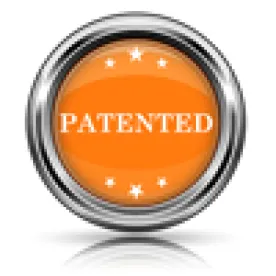The U.S. Supreme Court (Justice Kennedy writing for the majority) has now eliminated a defense that has been available to parties accused of actively inducing patent infringement under 35 USC § 27 (b). The Court held that a good-faith belief of invalidity of a patent isnot a defense to a charge of inducing infringement. Commil USA, LLC v. Cisco Systems, Inc., Case No. 13-896 575 (May 26, 2015) (Scalia, J., dissenting, joined by Roberts, C.J.) (Breyer, J. took no part in the case).
In reversing the U.S. Court of Appeals for the Federal Circuit on the issue presented, the Supreme Court held that Cisco’s good-faith belief that the Commil patent at issue was invalid was not a defense to Commil’s claim that by selling products for its customers’ use Cisco induced infringement.
However, the Supreme Court also took the opportunity to reaffirm its 2012 holding in Global-Tech Appliances, Inc. v. SEB S.A. regarding the requirements for proving induced infringement. The Court confirmed that in order to prove active inducement a patent owner must show that the accused infringer has both knowledge of the patent and knowledge that the induced acts constitute patent infringement. In doing so the Court rebutted the position of Commil and the U.S. government, both of which argued that knowledge that the induced acts constitute infringement was not required for a finding of induced infringement.
Background
Commil is the owner of a patent directed to short-range wireless networks and, in the words of the Court, claims “a method of providing faster and more reliable communications between devices and [a wireless network] base stations.” Commil sued Cisco, a maker and seller of wireless network equipment, alleging both direct infringement and active inducement in selling its equipment for others to use. On the inducement count, Cisco raised the defense that it had a good faith belief that Commil patent was invalid, but the district court found evidence that belief was “inadmissible.”
On appeal, the Federal Circuit found the district court had erred in excluding Cisco’s evidence of its good-faith belief that the patent was invalid. Commil then petitioned the Supreme Court for certiorari and this appeal followed.
Global-Tech Revisited
During the pendency of Commil’s action in the district court, but after the jury verdict, the Supreme Court issued its opinion in Global-Tech, holding that in order to be liable for inducement, the accused infringer must both know of the patent and that “the induced acts constitute patent infringement.” In its charge to the jury (and over Cisco’s objection), the district court instructed that liability for inducement exists if the defendant “knew or should have known that its actions would induce infringement” (emphasis added). Although the Federal Circuit found that instruction erroneous based on Global-Tech, Commil and amicus, the U.S. government argued to the Supreme Court thatGlobal-Tech should be read as only requiring knowledge of the patent to support a claim of inducement, thus occasioning the Court to revisit its Global-Tech ruling, if only to emphasize that “Global-Tech’s explicit holding that liability for induced infringement can only attach if the defendant knew of the patent and knew as well that ‘the induced acts constitute patent infringement’.”
Infringement Versus Invalidity
Justice Kennedy, starting with the premise stated in Global-Tech that intent is an element of active inducement under § 271(b), explained that the intent required relates to acts of infringement and “that infringement and invalidity are separate matters under patent law.” The Court then concluded that “permitting a defense of belief in invalidity would conflate issues of infringement and validity” and would undermine the presumption of validity.
Quoting from Judge Newman’s dissent in Commil (and alluding to the dissent here), Justice Kennedy dismissed the argument that an invalid patent cannot be infringed as a “simple truth” that ignores the statutory framework. As Justice Kennedy explained “invalidity is not a defense to infringement, it is a defense to liability” and “cannot negate the scienter” requirement.
The Court went on to explain that infringement and validity are “separate issues” under the patent law and cited various aspects of the patent laws evidencing the intent of Congress to establish this dichotomy. Rather than a defense to infringement, the Court reasoned that any belief regarding invalidity should be tested in a declaratory judgment claim (or counterclaim) or in post-issuance PTO proceeding.
The Dissent
In his dissent, Justice Scalia (joined by Chief Justice Roberts) found the majority thesis regarding the divisibility between infringement and invalidity “not persuasive.” Scalia took particular aim at the majority explanation that it did not want “to create a defense based on good faith belief in invalidity” (emphasis in original). In the view of the dissent, the job of the Court is not to create defenses, but is simply to interpret the patent laws. Given that Global-Tech makes knowledge of infringement a requirement for active inducement and there can be no such knowledge in the case of an invalid patent, the dissent would find that a “good faith belief in invalidity is a defense” to inducement.
Practice Note: The majority opinion takes a detour to justify its holding by noting that frivolous cases of induced infringement can be addressed through administrative proceedings at the U.S. Patent and Trademark Office, such as reexaminations and proceedings before the U.S. Patent Trial and Appeal Board (PTAB), as well as sanctions and fees imposed by district courts. As the majority notes, “[T]hese safeguards, combined with the avenues that accused inducers have to obtain rulings on the validity of patents, militate in favor of maintaining the separation expressed throughout the Patent Act between infringement and validity.” However, it is not self-apparent that the availability of these venues and remedies address the fundamental issue raised by the dissent.




 />i
/>i

